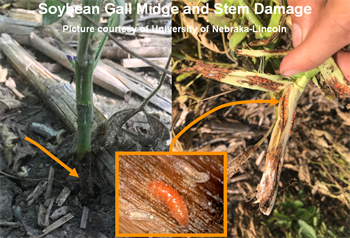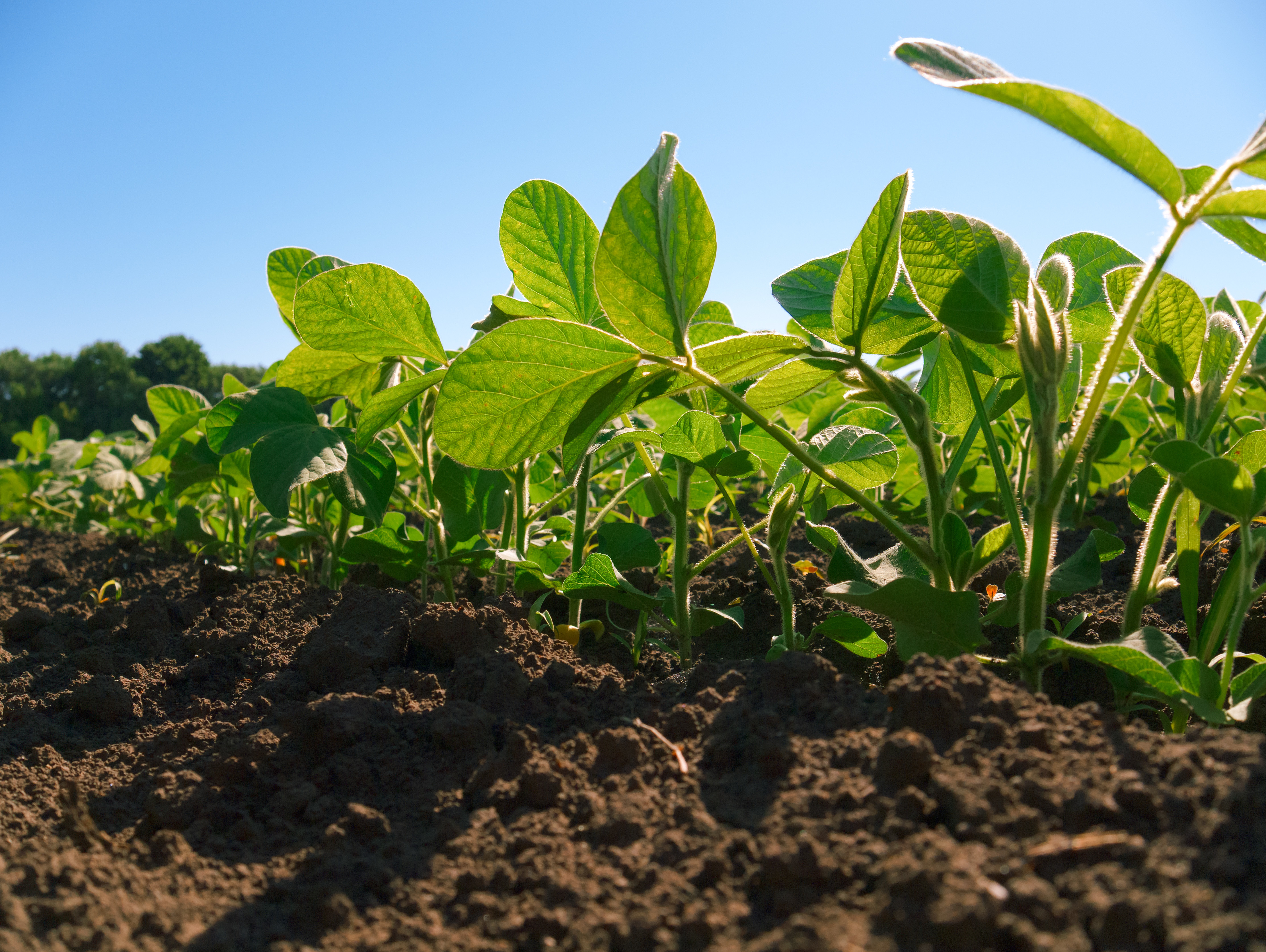AGRONOMICSUPPORT
YOU CAN TAKETO THE FIELD
Soybean Gall Midge
2018 was another challenging year for corn and soybean growers in the western Corn Belt. Adverse weather and grain market volatility were accompanied by a little-known soybean pest, the soybean gall midge.
First identified in northeastern Nebraska in 2011, soybean gall midge slowly spread to 65 counties in 4 states (Iowa, S Dakota, Minnesota and Nebraska) by 2018. Prior to 2018, gall midge infestations were found in fields that experienced hail damage early in the growing season, leading entomologists to believe that the adults were attracted to damaged plants. Infestations also occurred later in the growing season and had minimal impact on yield. 2018 saw earlier infestations and as a result, yield loss in those fields was significant.
 Soybean gall midge larvae can be found in the lower parts of the stem (several inches above the soil line) June through August. The larvae have 3 instars, with the third instar being the largest and having an orange color. Infested stems can be discolored and swollen. Splitting the stem at this point will reveal the larvae feeding on stem tissue. The larvae basically girdle the stem, causing the plant to wilt, and then die. Early in the growing season, the wilting plants can be confused with Phytophthora root rot. Infestations generally begin along the field margins and progress into the field. Infestations that occur later in the growing season my not kill the plant but can weaken the stem, causing lodging and potential harvest issues.
Soybean gall midge larvae can be found in the lower parts of the stem (several inches above the soil line) June through August. The larvae have 3 instars, with the third instar being the largest and having an orange color. Infested stems can be discolored and swollen. Splitting the stem at this point will reveal the larvae feeding on stem tissue. The larvae basically girdle the stem, causing the plant to wilt, and then die. Early in the growing season, the wilting plants can be confused with Phytophthora root rot. Infestations generally begin along the field margins and progress into the field. Infestations that occur later in the growing season my not kill the plant but can weaken the stem, causing lodging and potential harvest issues.
The adult soybean gall midge is a small fly that is approximately ¼ inch long and has black and white banded legs. The females have a long ovipositor and it is unknown at this time if the ovipositor can penetrate healthy stem tissue or if the stem needs to be damaged (by either disease or mechanically) for eggs to be laid. They are weak fliers which made trapping or capturing them difficult. UNL researchers placed cages in soybean fields in which the gall midge was present. The cages were monitored for nearly 3 weeks and adult emergence was sporadic during that time. Soybean plants were also removed, and the traps placed on bare soil to determine if the larvae pupate in plant material or in the soil. Adults were captured in cages set on bare soil.
Soybean fields that bordered fields that had grown soybeans the previous crop year as well as those that had dense, uncut brome grass and shelter belts appear to be most at risk for soybean gall midge activity. A survey of fields that had gall midge damage showed a range of row spacing, planting dates, tillage practices, and fertility plans, none of which having a direct impact on gall midge pressure.
The soybean gall midge is a relatively new pest on which not much data has been collected. Researchers from the University of Nebraska-Lincoln, Iowa State University, University of Minnesota, and South Dakota State University are collaborating to gather more information on soybean gall midge and best practices for its control. There are currently no consistent management practices for soybean gall midge control. Look for more information on this pest during and after the 2019 growing season.
For any additional information contact your local LG Seeds Sales Account manager (SAM) or Technical Team Agronomist (TTA).
Sources and additional information:
University of Nebraska - Lincoln
Iowa Soybean Association
Iowa State University
Download a copy of this technical bulletin here: Soybean Gall Midge






Technical Team Agronomist